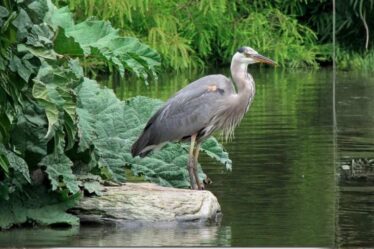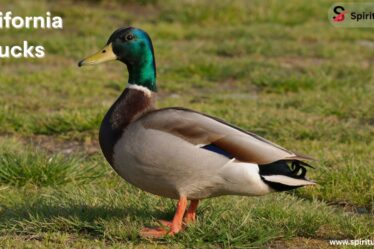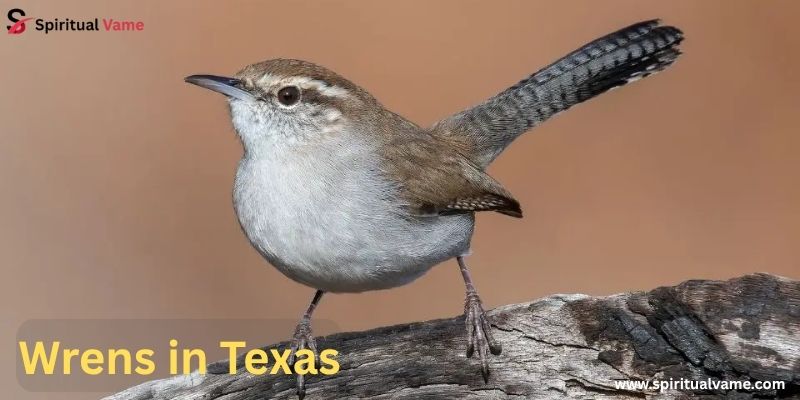
Wrens in Texas are small birds with big voices. You can find them in cities, forests, deserts, and wetlands. These birds are full of energy and love to sing. They hop through bushes, search for insects, and build nests in the most surprising places. Many people enjoy watching wrens in Texas right in their backyards.
Texas is home to nine different wren species. Each one has its own sound, color, and favorite place to live. From the dry west to the green east, wrens in Texas fill the state with life and song. If you love nature, these little birds are a joy to see and hear.
9 Wrens in Texas
Texas is home to a remarkable variety of wren species—nine in total—ranging from the familiar backyard House Wren to the dramatic cliff-dwelling Canyon Wren. These birds may be tiny, but their voices and behavior tell a big story. Wrens are insect lovers, nest weavers, and territorial singers. Their preference for twigs, feathers, leaves, and even moss in nest-building shows how adaptable they are in both urban and wild places. While some wrens are common across the state, others prefer specific landscapes like wetlands, grasslands, or rocky slopes.
You’ll see different sizes, too. From the petite Winter Wren measuring just over 3 inches, to the robust Cactus Wren, which can reach over 9 inches, these birds vary widely. Despite their differences, each one plays an essential role in biodiversity, and spotting all nine in the wild is a real treat for nature lovers.
1. House Wren
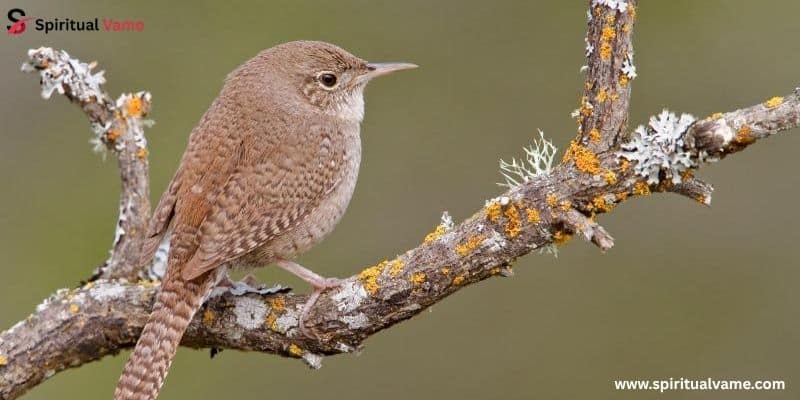
The House Wren (Troglodytes aedon) is one of the most familiar wrens in Texas. It’s a small bird—about 4.3–5.1 inches (11–13 cm) long and weighing 0.3–0.4 oz (8–12 g). This species has brown plumage with barred wings and a short tail often held upright. You’ll usually find them darting through bushes or flitting around backyard habitats, especially during the breeding season. They’re not picky about their homes and are known to nest in woodpecker holes, birdhouses, and even old boots.
With a spirited song that seems to come out of nowhere, these birds are highly active and excellent at keeping garden pests like insects, beetles, caterpillars, and spiders in check. They’re excellent natural pest controllers, thriving in human-altered landscapes thanks to their agility and clever nesting behavior. Because of their Least Concern status, they’re a healthy reminder of how birds and people can live side by side.
2. Marsh Wren
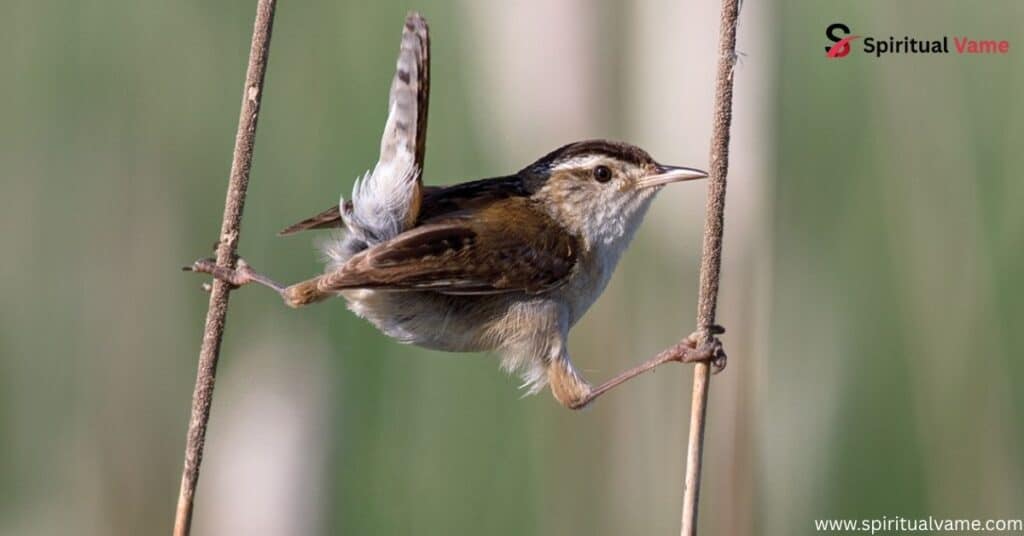
Living among dense reeds and cattail grasses, the Marsh Wren (Cistothorus palustris) is a specialist of wetlands and waterways across North America. Measuring about 4.7–5.5 inches (12–14 cm) and weighing 0.4–0.5 oz (12–14 g), it’s a delicate-looking bird with a white stripe above its eye, a dark cap, and a long narrow beak. Its plumage mixes brown and beige shades, helping it blend perfectly with its surroundings.
The Marsh Wren sings a bubbly, complex tune that echoes through the reeds. It builds multiple floating nests, shaped like tiny woven globes, anchored to cattail reeds. This behavior helps protect it from predators and rising water. These birds feed mainly on aquatic insects and spiders and are sensitive to drainage, pollution, and habitat loss, making conservation and habitat preservation critical to their survival in Texas’ marshy regions.
3. Carolina Wren
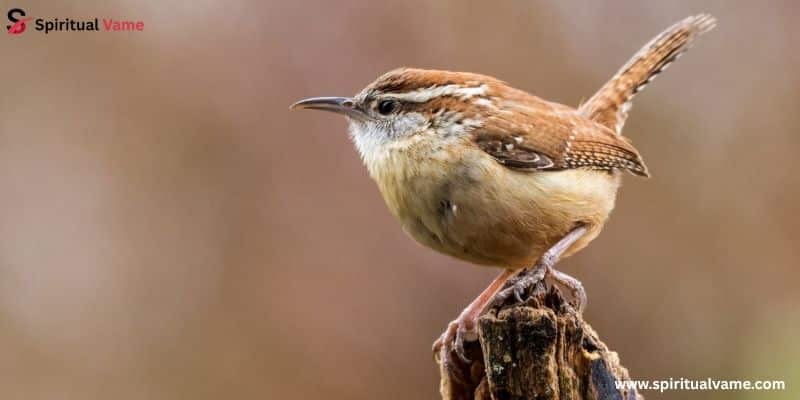
The Carolina Wren (Thryothorus ludovicianus) is a bold, year-round resident in eastern and central Texas. It’s slightly bigger than most wrens, growing 4.7–5.9 inches (12–15 cm) and weighing 0.6–0.8 oz (18–22 g). This wren is easy to recognize with its reddish-brown coat, white eyebrow stripe, round body, and downcurved beak. It thrives in woodland, underbrush, and even human habitations like sheds and porches.
Its loud call, which often sounds like “tea-kettle, tea-kettle, tea-kettle,” is one of the easiest bird songs to remember. The Carolina Wren builds nests with moss, twigs, and feathers, and feeds on insects, spiders, seeds, and fruit. With milder winters and the help of bird feeders, its range is expanding across the southeastern US. This species is a beautiful example of human–wildlife coexistence and habitat conservation done right.
4. Winter Wren
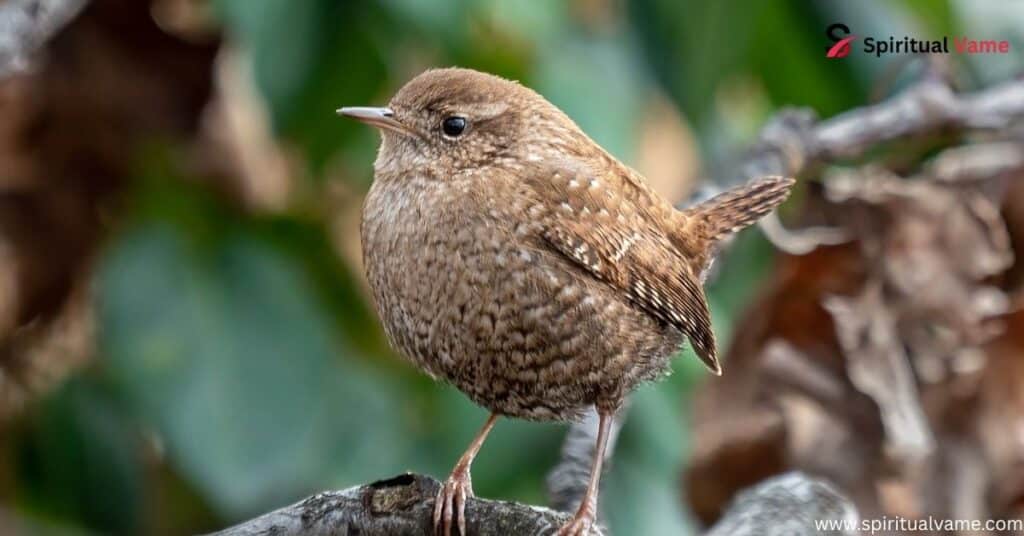
The Winter Wren (Troglodytes hiemalis) is a small visitor from northern North America that travels south to Texas during colder months. It only grows 3.5–4.3 inches (9–11 cm) and weighs about 0.2–0.4 oz (6–12 g), but don’t let the size fool you—it has one of the most elaborate bird songs in the forest. With rich brown plumage, darker barring, and a short tail cocked upward, it stays close to the forest floor or low underbrush, often near fallen logs.
These wrens build nests with feathers in hidden spots and forage for insects and spiders under leaves and bark. Though uncommon, spotting one during a winter hike in a Texas forest is a special moment. As a Least Concern species, it still serves as a conservation ambassador, reminding us of the impact of deforestation on old-growth forests where it breeds.
5. Sedge Wren
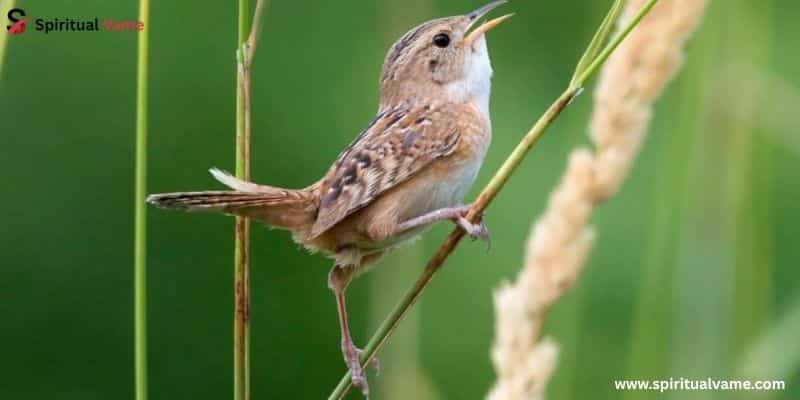
The Sedge Wren (Cistothorus platensis) prefers grasslands and dense sedge meadows, especially in open prairies. It’s a small bird—about 4.3–4.7 inches (11–12 cm) long and 0.3–0.4 oz (9–11 g)—with a streaked brown and buff plumage that offers excellent camouflage. Known for its sharp staccato call, this bird is hard to spot but worth the effort.
Sedge Wrens often build hidden nests deep in grasses using twigs and leaves. They perform a little foraging dance while hunting insects, adding charm to their already fascinating behavior. Although they’re considered Least Concern, they’re still rare in parts of Texas due to habitat changes. Their presence highlights the importance of prairie ecosystems and ongoing conservation efforts.
6. Bewick’s Wren
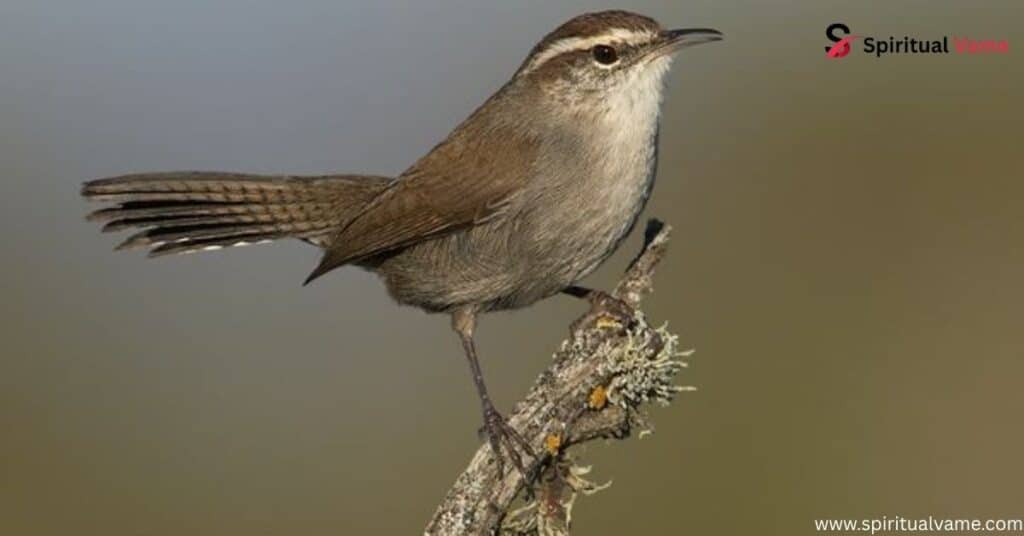
The Bewick’s Wren (Thryomanes bewickii) is still fairly common in western US and central Texas, though it has declined in some parts of its range. This wren grows to about 4.7–5.9 inches (12–15 cm), with a long wagging tail, white eyebrow stripe, and gray-brown body. It nests in tree cavities, mailboxes, and natural landscapes, adapting well to urban environments and open woodlands.
It sings a clear, musical tune and spends time flitting through underbrush and leaf litter. The Bewick’s Wren is a great example of natural pest control, eating insects, spiders, and other small bugs. Its decline in some places is tied to nesting-site loss, making conservation and urban habitat planning important for keeping this species around.
7. Rock Wren
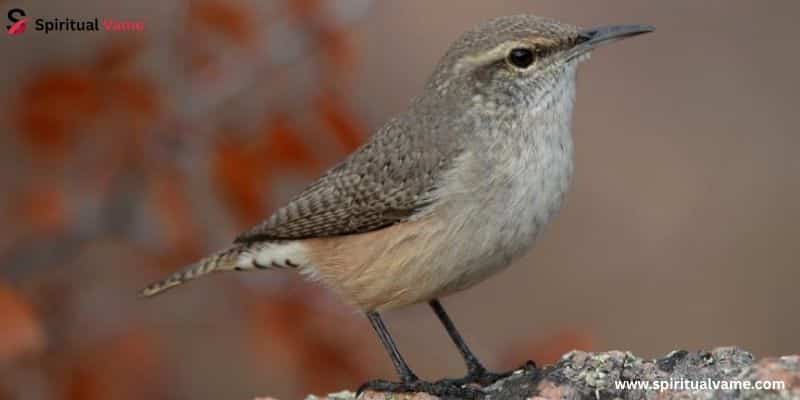
The Rock Wren (Salpinctes obsoletus) feels most at home in the western North American mountains and deserts, including parts of western Texas. Measuring 5.5–6.3 inches (14–16 cm) and weighing 0.8–1.1 oz (23–31 g), it has a speckled gray and brown plumage, a sturdy body, and long legs for hopping over rocky outcrops and cliffs.
Their nests are often hidden in crevices and uniquely lined with pebbles. These wrens hunt insects and adapt well to harsh desert climates, playing a role in desert biodiversity. However, issues like climate change and human encroachment could threaten their habitat in the future.
8. Canyon Wren
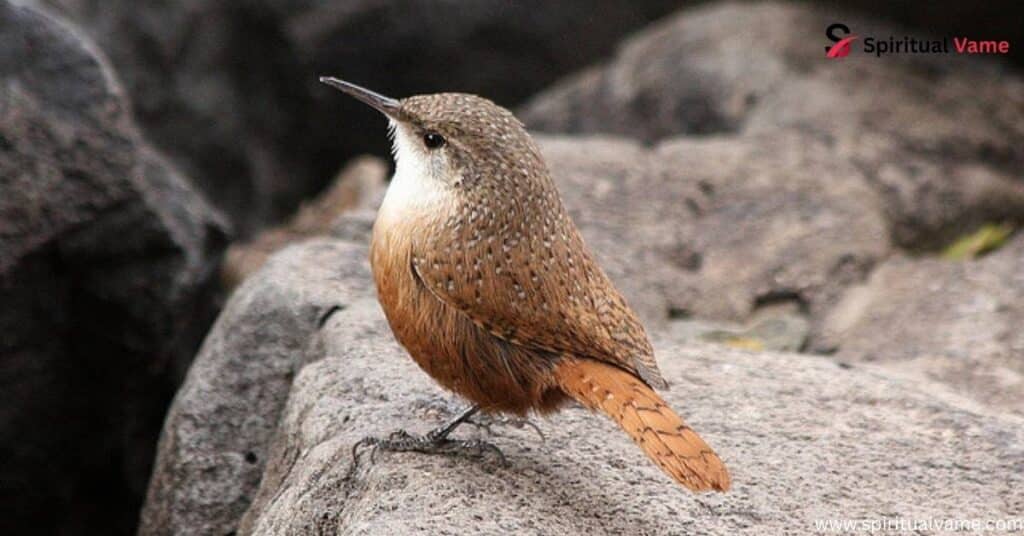
The Canyon Wren (Catherpes mexicanus) is hard to forget once you hear its haunting song echoing through the vertical cliffs of Texas’ rugged west. With a white throat, rust-colored belly, and gray-brown wings, this bird measures around 4.7–5.9 inches (12–15 cm) and weighs 0.5–0.7 oz (14–20 g).
It builds nests in rock crevices and searches for insects and spiders on rocky slopes using its pointed beak. Often spotted during early morning hikes, the Canyon Wren is closely tied to canyon ecosystems and represents the delicate balance of biodiversity and conservation in dry regions.
9. Cactus Wren
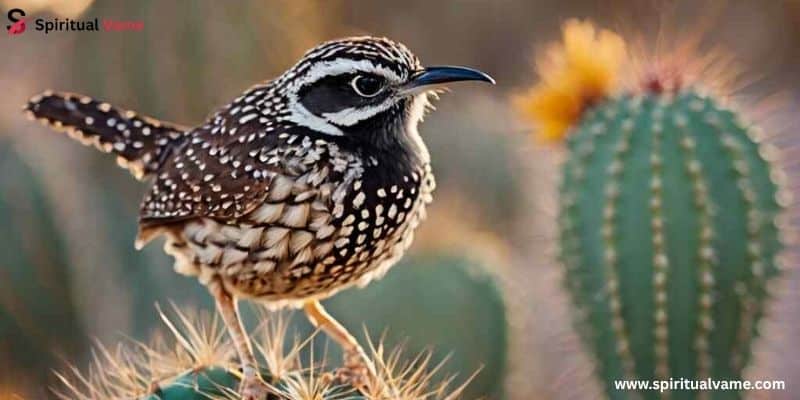
The Cactus Wren (Campylorhynchus brunneicapillus) is the largest wren in North America, reaching 7.5–9.1 inches (19–23 cm) and weighing 1.5–2.1 oz (42–60 g). Its black and white spotted chest, brown back, stout body, and long tail give it a bold desert look. You’ll find it nesting inside cholla and saguaro cacti across southwestern US and Mexico.
This species builds large, football-shaped nests from twigs and feathers, and feeds on insects, fruits, and seeds. It’s well adapted to desert life and plays a vital role in maintaining ecological balance. With its presence tied closely to desert habitat conservation, this wren is as much a symbol of the southwest as the landscape itself.
Where to find Wrens in Texas
Wrens are spread across every corner of Texas, and each spot offers a new surprise. Head to Big Bend National Park if you’re searching for the Rock Wren or Canyon Wren—its rugged terrain, rocky outcrops, and morning hiking trails are perfect for sightings. Visit Santa Ana National Wildlife Refuge in the Lower Rio Grande Valley for Carolina Wrens hidden in dense thickets and woodlands. The Hill Country State Natural Area is ideal for finding Bewick’s Wrens, especially on dawn or dusk trails filled with oak-juniper woodlands.
Looking for the Cactus Wren? Make your way to the Guadalupe Mountains National Park, where desert flora and early morning light create the perfect backdrop. Always bring a field guide, binoculars, and keep a respectful distance. Whether you’re a novice or an expert, Texas is a birdwatching paradise full of biodiversity and conservation success stories.
Conclusion
Wrens in Texas are more than background singers in the bird world—they’re vibrant, busy, and deeply connected to the land. Each species has carved out a special niche in the state’s rich tapestry of habitats. Whether flitting through a marsh, singing from a canyon wall, or building nests in your backyard, these birds bring energy, beauty, and purpose to every environment they touch. Grab your binoculars and hit the trails—Texas’ nine wrens are waiting.

